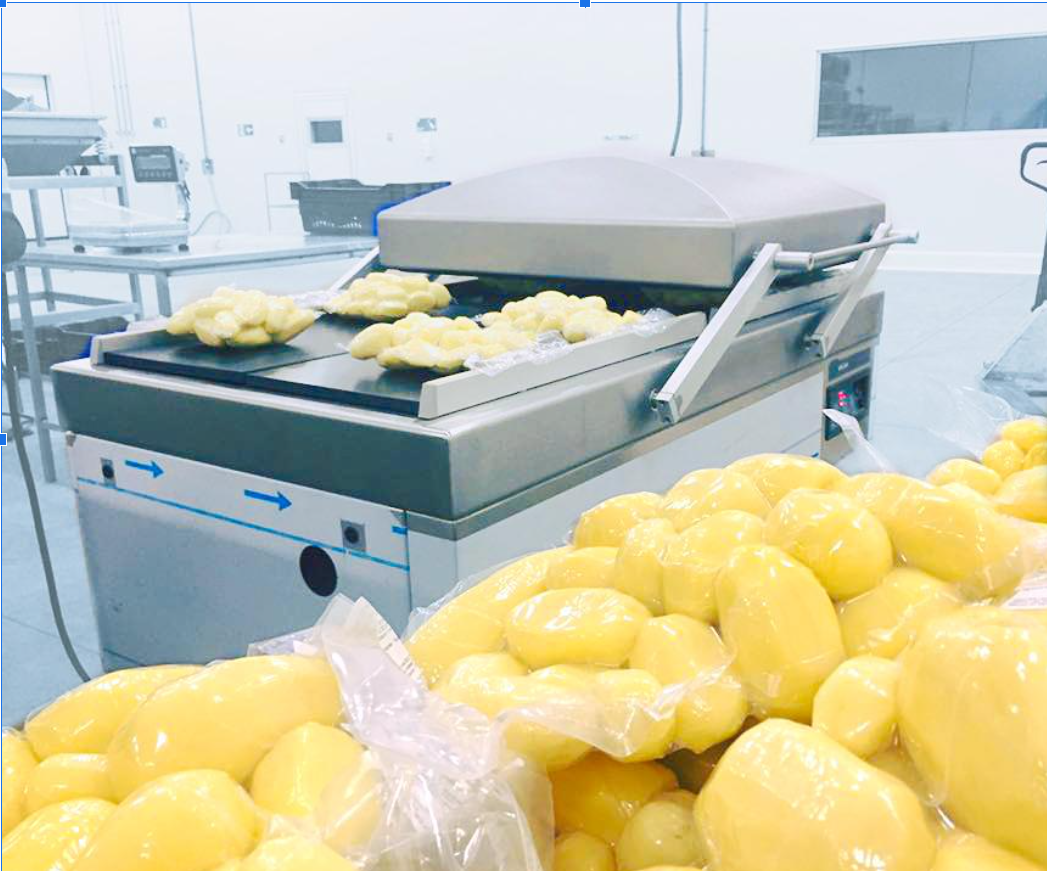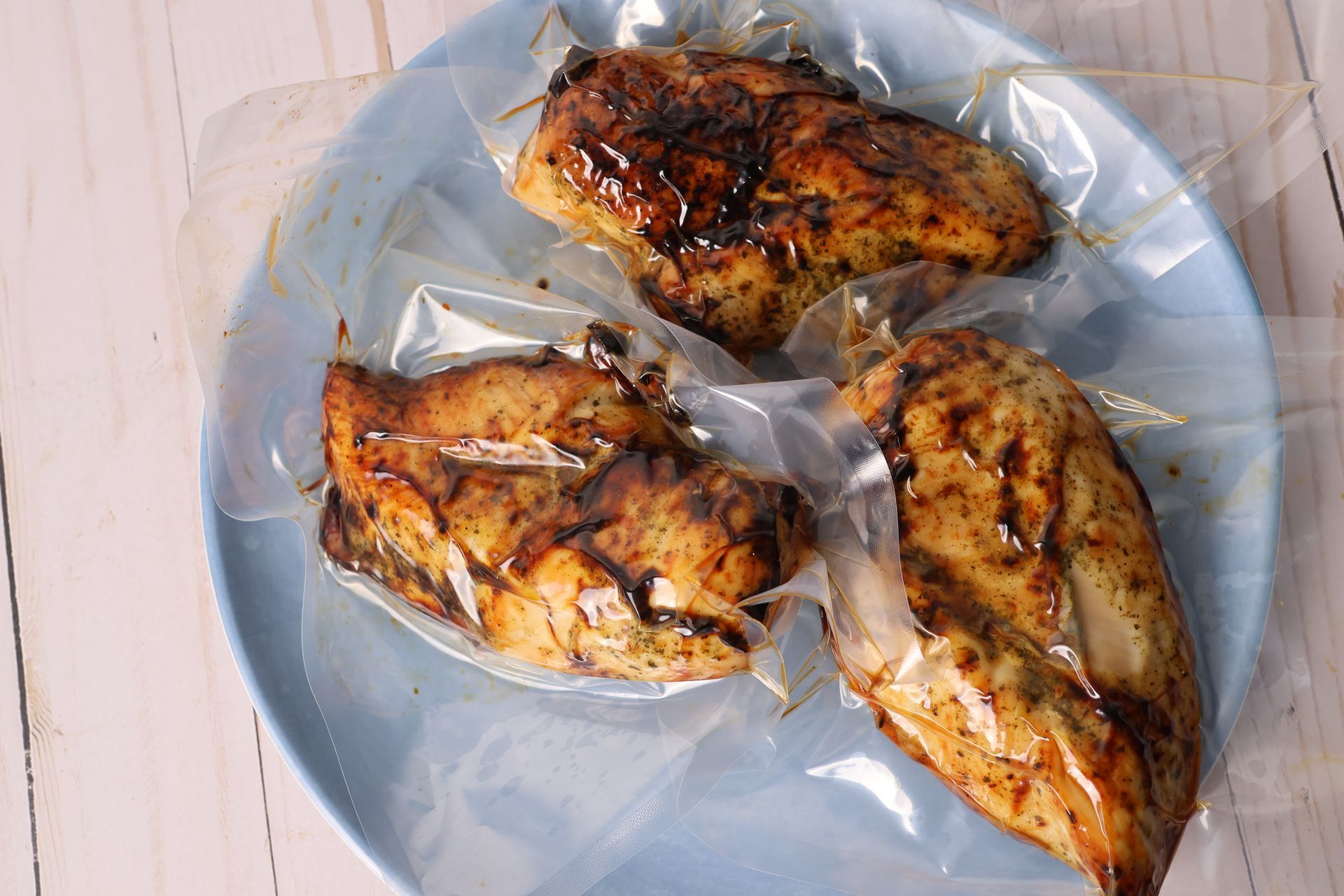RESOURCE CENTER
Connect with our vast network of world-class food service professionals for unrivaled expertise in Commercial Food Service Vacuum Sealer Equipment & Applications.
Follow along as we bring you tips, tricks, and recipes from the industry’s best.
Invacus Resource Center

Not all plastic is bad??!! Why do vacuum bags play an important role in reducing food waste. According to data from the United States Department of Agriculture (USDA), an unsettling 40% of food produced annually ends up in the trash. This equates to approximately 36 million tons of food, with a staggering monetary value of $162 billion per year. The majority of this waste is due to spoilage, often within the retail and household sectors. Further, the implications of food waste extend beyond mere economic repercussions. Spoiled food releases methane, a greenhouse gas more potent than carbon monoxide. The resources wasted in the process - water for cultivation, fuel for transportation - exacerbate the environmental impact. Therefore, it is in everyone's best interest to pinpoint effective strategies to minimize food waste. One such strategy lies in the choice of packaging. Packaging: The Silent Hero in Food Preservation Contrary to popular belief, food packaging plays a significant role in combating food waste. Plastic packaging, for instance, contributes substantially to the reduction of food spoilage by providing a physical shield against environmental factors that speed up spoilage. This barrier prolongs the shelf life of food products. Innovations in packaging, such as oxygen-scavenging additives, can further increase shelf life by actively removing oxygen from the packaged environment. This is particularly important given that food now travels much further before consumption. The right packaging not only protects the food during transport but also provides instructions for correct storage and handling, thereby preserving its contents once in the consumer's hands. Intelligent Packaging: A Key to Reducing Food Waste Intelligent packaging design has the potential to reduce spoilage by anticipating common packaging failures. The best packaging companies can predict the causes of these failures and implement design modifications to safeguard the contents. With the right engineering, it's possible to analyze package damage trends and devise solutions to address these specific issues. The Paradox of Packaging While we often associate packaging with environmental pollution, the paradox is that efficient and responsible use of packaging technology could significantly reduce our food waste. For instance, vacuum packaging that prevents oxidation can ensure that meat stays fresh on shelves for eight to fourteen days, compared to the usual two to four. Not only does this cut down on waste, but it also appeals to consumers. According to Mintel's 'Transparent Food Packaging' report, roughly 40% of US shoppers would opt for a product among competitors if they could clearly see its contents. The Vacuum Packaging Solution Vacuum packaging technology, such as that used by Sainsbury's supermarket has shown noticeable benefits. This packaging extends the shelf life of dairy and meat products, which can now be kept in refrigerators for a longer time, thus reducing waste. While vacuum packaging does contribute to carbon emissions, it importantly reduces the waste of the food product produced. For each ton of waste, the equivalent of 3.5 tons of carbon dioxide are released without any product having been put to good use. Conversely, a ton of packaging results in emissions of 1-2 tons. The Challenges of Vacuum Packaging Like any solution, vacuum packaging is not without its drawbacks. One of the key issues is that it is not as easily recycled as other types of packaging. However, considering the rapidly growing global population, estimated to approach 10 billion by approximately 2050, it's urgent that we find ways to feed these numbers. Reducing the amount of food, we waste is a critical part of this, and vacuum packaging is a step in the right direction. The Future of Food Packaging With the ongoing advancements in packaging technology, it's reasonable to believe that we can overcome the current challenges of vacuum packaging, making it a sustainable solution for the future. The aim is to strike a balance between the environmental impact of packaging and its effectiveness in reducing food waste. Conclusion: Fresh Foods Fresh, Reduce Waste and Over Production of Food In conclusion, vacuum bags play an essential role in keeping our foods fresh, reducing waste, and consequently curbing overproduction of food. By keeping food shelf-stable for two to four times longer in the fridge and for months in the freezer, vacuum bags significantly cut down on food waste. This, in turn, leads to reduced food purchasing and lower overall food production. While there are challenges to overcome, particularly in terms of recycling, the benefits of vacuum packaging technology are making a significant difference in our fight against food waste.

The foodservice industry has been confronted with a myriad of challenges in recent years, from the COVID-19 pandemic's disruption of supply chains to the rising cost of ingredients. The year 2022 was particularly difficult for restaurants, as they grappled with increased food costs amidst their recovery efforts. However, comparing the restaurant food cost in 2022 versus 2023, there was a significant increase. On average, a small restaurants food costs increased by $200 per week over the summer months in 2023 over the same period in 2022. Several factors contribute to this upward trajectory. The most evident of these is the elevated inflation rates globally. The rising cost of goods, particularly food items, is not isolated to the restaurant industry. Consumers in every sector are feeling the pinch as prices climb. For restaurants, this translates to more expensive procurement costs for ingredients, which inevitably leads to higher menu prices. Another contributing factor is the escalating fuel prices. The transportation of food items heavily depends on fuel. As such, any increase in fuel costs directly impacts the cost of food delivery to restaurants. This additional expense is often passed along to consumers in the form of higher meal prices. Supply chain disruptions continue to be an issue as well. The global pandemic highlighted vulnerabilities in our supply chains, leading to shortages and increased costs for several commodities. Unless these issues are fully resolved, we can expect them to continue influencing food costs into 2024. While 2022 presented its share of challenges regarding food costs in the restaurant industry, 2023-24 is likely to see a continuation of this trend. The combination of inflation, rising fuel and and ongoing supply chain issues are all factors contributing to the significant increase from 2022 to 2023 & 2024. As the restaurant industry continues to navigate these challenges, it is essential for businesses to explore innovative strategies to manage these increasing costs and maintain profitability. One piece of equipment that can directly impact food cost in food service is vacuum sealing. When implemented correctly into an operation it will reduce food waste, prep time, deliveries and ability to buy in bulk and/or season. All this while keeping fresh and cooked products fresh for longer, never running out of product and keeping the kitchen team organized and ready for the unexpected. Using a chamber vacuum sealer from @Henkelman on average will save you 20% in food costs per week. For a small restaurant that has $1,500 per week in food bill, that would be mean an 8-10 week pay back in the investment of a Henkelman. To learn how your operation can reduce food cost visit… https://www.invacus.com/food-waste-impact-calculator
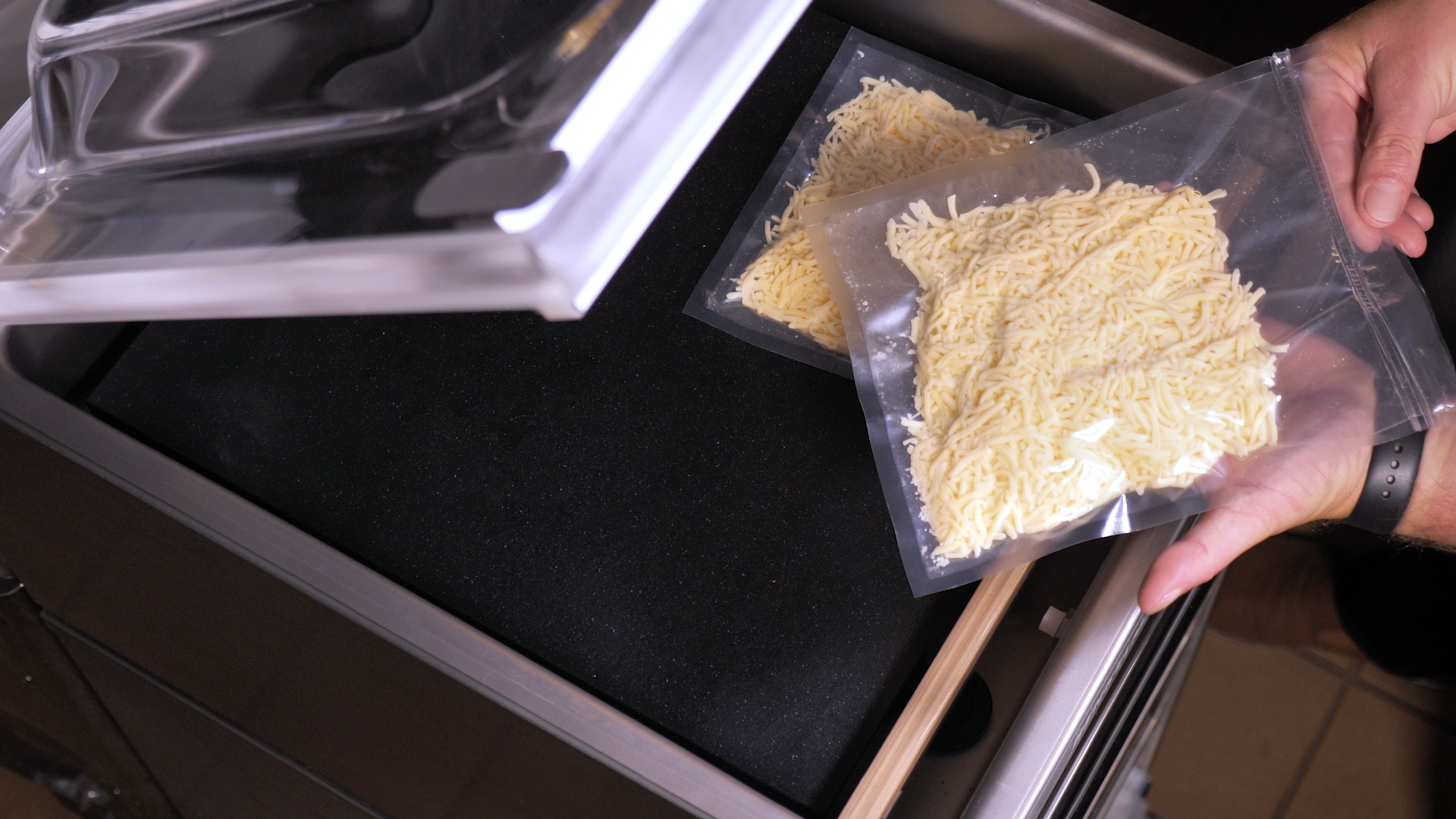
Cheese preservation involves several techniques to protect the cheese from spoilage, maintain its quality, and extend its shelf life. Traditionally, cheese makers have used methods such as waxing or creating natural rinds for preservation. However, with advancements in technology, vacuum sealing has emerged as a popular method for storing and preserving cheese. What is Vacuum Sealing? Vacuum sealing is a process that involves removing air from a package and then sealing it. The lack of air in the package significantly slows down the deterioration of food, making it an effective method for preserving various food items, including cheese. The Vacuum Sealing Process The vacuum sealing process involves placing the cheese in a plastic bag and using a vacuum sealer to suck the air out of the bag. Once the air is removed, the bag is sealed to create a completely airtight environment. This lack of air inhibits the growth of bacteria and molds, thereby preserving the cheese. Advantages of Vacuum Sealing - Vacuum sealing offers several benefits for cheese preservation: 1. Extended Shelf Life: Vacuum sealing can significantly extend the shelf life of cheese. With no air to disrupt the cheese, its freshness is maintained for a longer period. 2. Prevention of Molds and Bacteria: The airtight environment created by vacuum sealing inhibits the growth of bacteria and molds. 3. Space Efficient: Vacuum-sealed cheese takes up less space, making it an efficient storage solution for small cheese caves or refrigerators. 4. Prevents Cross-Contamination: Since each cheese is sealed in its own bag, there's no risk of flavors mixing between different types of cheese. Commercial Grade Vacuum Sealers: An Overview Commercial-grade vacuum sealers offer more advanced features compared to home-use vacuum sealers. They typically have stronger suction power, can handle larger quantities of food, and often come with additional features like trapped air technology and soft air function. The Role of Henkelman's Commercial Grade Vacuum Sealers in Cheese Preservation One notable brand that offers commercial-grade vacuum sealers is Henkelman. Henkelman's vacuum sealers, equipped with trapped air technology, are particularly effective for hard cheeses. This function efficiently removes any trapped air that can get stuck in a hard or shredded cheese. In addition, Henkelman's vacuum sealers also feature a soft air program perfect for packaging softer cheese without damaging the product. Comparing Vacuum Sealing to Other Cheese Preservation Methods Compared to traditional preservation methods like waxing or creating natural rinds, vacuum sealing offers a more convenient and efficient solution. However, the taste development process might be different when vacuum sealing is used, leading to a potentially different final product. Hence, it's essential to consider the type of cheese and its aging requirements before deciding on the preservation method. Tips for Successful Cheese Vacuum Sealing Here are a few tips to ensure successful vacuum sealing of cheese: 1. Choose the Right Bag: Use commercial-grade, BPA-free vacuum bags for best results. 2. Pre-Season the Rind: Kill off any bacteria/mold on the rind before vacuum sealing. 3. Let the Cheese Rest: After vacuum sealing, let the cheese rest for a few hours before consuming to find equilibrium in the new environment and aerate out any unwanted flavors. While vacuum sealing is not a traditional approach to cheese aging, it offers a convenient and efficient solution for cheese preservation, especially when space is a concern. Commercial-grade vacuum sealers, like those from Henkelman, further enhance the process with their advanced features. However, it's essential to note that vacuum sealing might alter the flavor development process of cheese, leading to different outcomes than other preservation methods. Therefore, it's crucial to consider the type of cheese and its aging requirements before choosing the vacuum sealing method for cheese preservation.
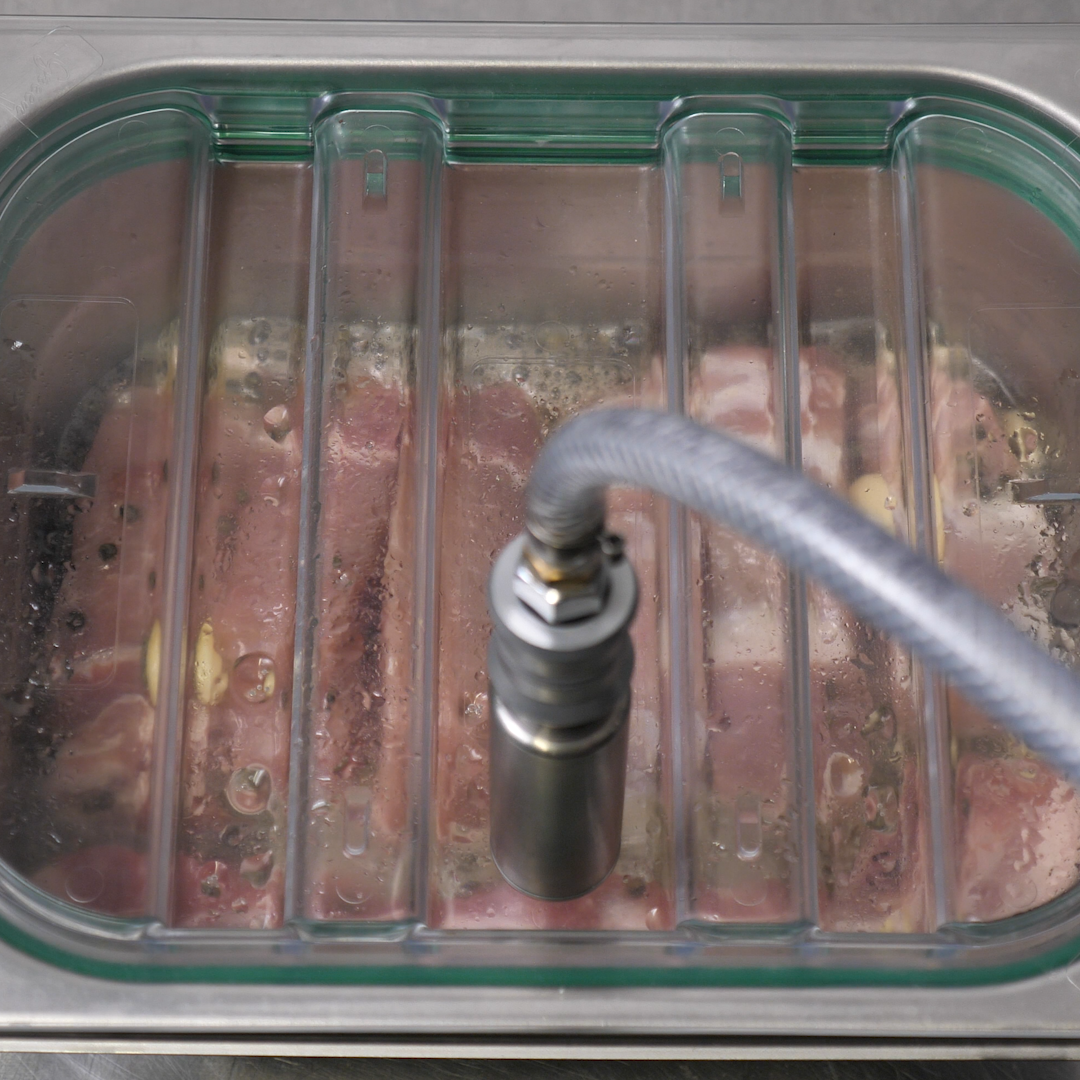
GreeVAC pans are built & designed to hold a “full” vacuum…ie….”remove all the air”. This is great for extending shelf, reducing food waste and bulk prep and can also do a whole lot more. Marinating & Brining - This is a great solution for being able to quickly get proteins to absorb marinades and brines. How it works – as the air is removed the pressure in the pan lowers, the fibers of the proteins begin to stretch, the liquid then starts to be absorbed like a sponge effect. Once you pull the desired vacuum the product can securely and safely sit. This can take about 5 - 15 minutes to get a perfectly marinated product. This will depend on the protein, cut and thickness. Quicker & more effective than the traditional method of 24 hrs marinade and store. Tenderize – Similar to marinating…again as the pressure lowers the fibers stretch and hold. This loosens up the protein. Turning a cheap cut into a tender cut without having to whack, needle, hammer or slow cook. When ready pinch the valve and use. Infusing & Pickling – By lowering the pressure this opens up the cells of fruits and vegetables which contain pockets of air and water. As the cells open this allows liquids whether pickling, juice, alcohol etc …to penetrate the cells and replace the pockets of air and water. This dramatically decreases the pickling and infusing time. Meaning you can now pickle and make things like Kimchi in minutes.
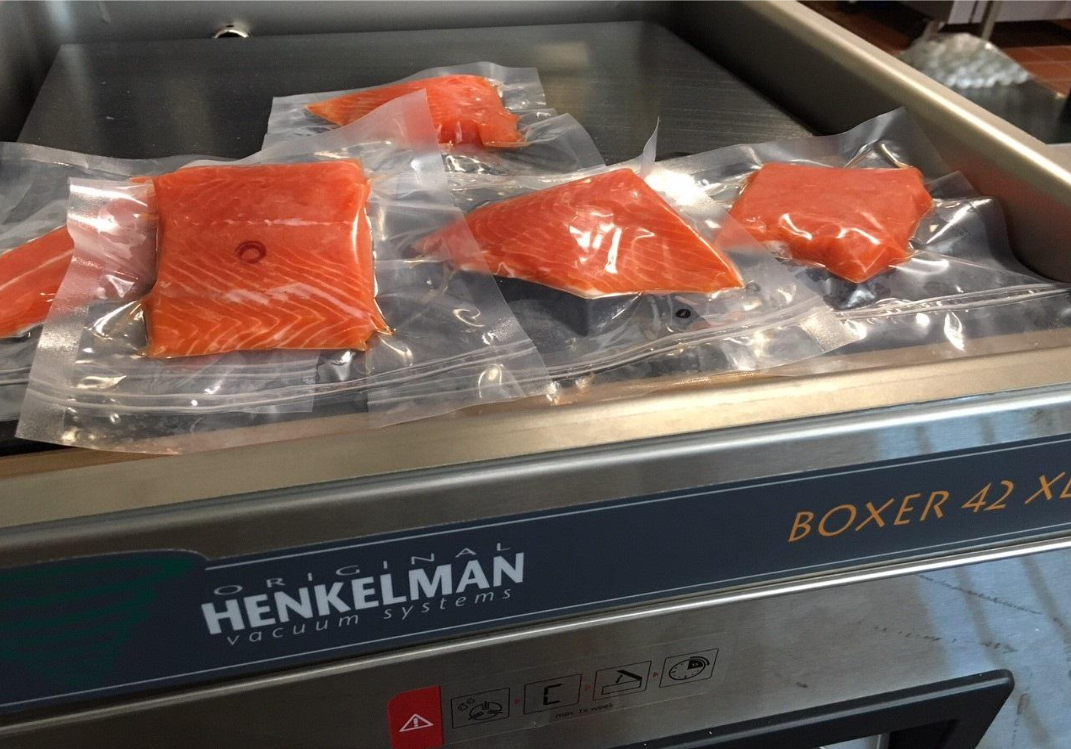
The art of preserving fish has been a part of human history for centuries, from salting to smoking and canning. However, as technology advances, we find more efficient and safer ways to extend the shelf life of our catch. One such method that has gained popularity over the years is vacuum sealing. But, what is vacuum sealing? This comprehensive guide will discuss everything you need to know about commercial vacuum sealing fish. Understanding Vacuum Sealing Vacuum sealing is a method of packaging that removes air from the package prior to sealing. This technique involves placing items in a plastic film package, removing air from inside, and sealing the package. The intent is to extend the shelf life of foods by creating an airless environment to inhibit the growth of bacteria, fungi, and other spoilage organisms. Why Vacuum Seal Fish? There are several reasons why vacuum sealing is an excellent method for preserving fish: Extends Shelf Life : Vacuum sealing can extend the shelf life of fish by up to two years if done correctly. The absence of air slows down the oxidation process, which leads to spoilage. Preserves Quality : Vacuum sealing not only keeps fish fresh but also maintains its texture and flavor. Prevents Freezer Burn : Freezer burn occurs when air comes into contact with the surface of frozen food, resulting in discoloration and a change in texture and flavor. Vacuum sealing removes air, hence preventing freezer burn. Saves Money : By extending the shelf life of fish, vacuum sealing reduces waste resulting from spoiled fish. This can translate into significant savings for commercial fisheries. Commercial Vacuum Sealing Fish: The Process Now that we have a basic understanding of vacuum sealing and its benefits, let's delve into the process of vacuum sealing fish in a commercial setting. Preparing the Fish The first step in vacuum sealing fish is the preparation. This includes cleaning the fish and cutting it into the desired portions. Depending on how you plan to serve the fish, you can either freeze the whole fish or cut it into portions. Pre-Freezing Most fish contain high levels of moisture, which can make vacuum sealing challenging. It's therefore recommended to pre-freeze the fish before sealing. Place the prepared fish on a baking tray, wrap it with plastic wrap, and pop it in the freezer for about one to two hours. Vacuum Sealing After pre-freezing, the fish is ready to be vacuum sealed. Weigh out serving size portions and place the individual portions in vacuum sealing bags. Ensure the area where the seal will be is completely dry to prevent failure of the seal. Labeling Once the fish is sealed, it's crucial to label each package. The label should include the type of fish, the date it was frozen, and any other relevant information. Storing Finally, the vacuum-sealed fish should be stored in the freezer until it's ready to be used. Properly vacuum-sealed fish can last in the freezer for up to two years. Thawing Vacuum Sealed Fish Thawing vacuum-sealed fish correctly is critical to maintain its quality. The best method is to thaw the fish slowly in the refrigerator. This allows the fish to reabsorb some of the excess moisture, resulting in a better texture and flavor once cooked. Quick thawing methods can cause the fish to lose moisture, leading to a drier, tougher texture. Enhancing the Vacuum Sealing Process with Technology Henkelman's commercial grade vacuum sealers are a game-changer for fish processors. These vacuum sealers come equipped with advanced features such as soft air, liquid control, and gas flush technology. Soft air ensures a smooth and gradual return of air into the chamber, preventing damage to the product and the packaging. Liquid control is perfect for vacuum sealing wet products like fish, as it prevents moisture from reaching the seal bar. Gas flush technology replaces the oxygen in the bag with an inert gas like nitrogen, further extending the shelf life of the fish. Conclusion Vacuum sealing is a valuable tool for commercial fisheries. It extends the shelf life of fish, preserves its quality, prevents freezer burn, and saves money by reducing waste. However, to get the most out of vacuum sealing, it's crucial to follow the correct process, from pre-freezing to storing. Further, investing in advanced vacuum sealing technology, like Henkelman's vacuum sealers, can enhance the process and offer additional benefits. So whether you're a commercial fishery looking to extend the shelf life of your catch, or a restaurant seeking to offer the freshest fish to your customers, vacuum sealing could be the solution you've been looking for.
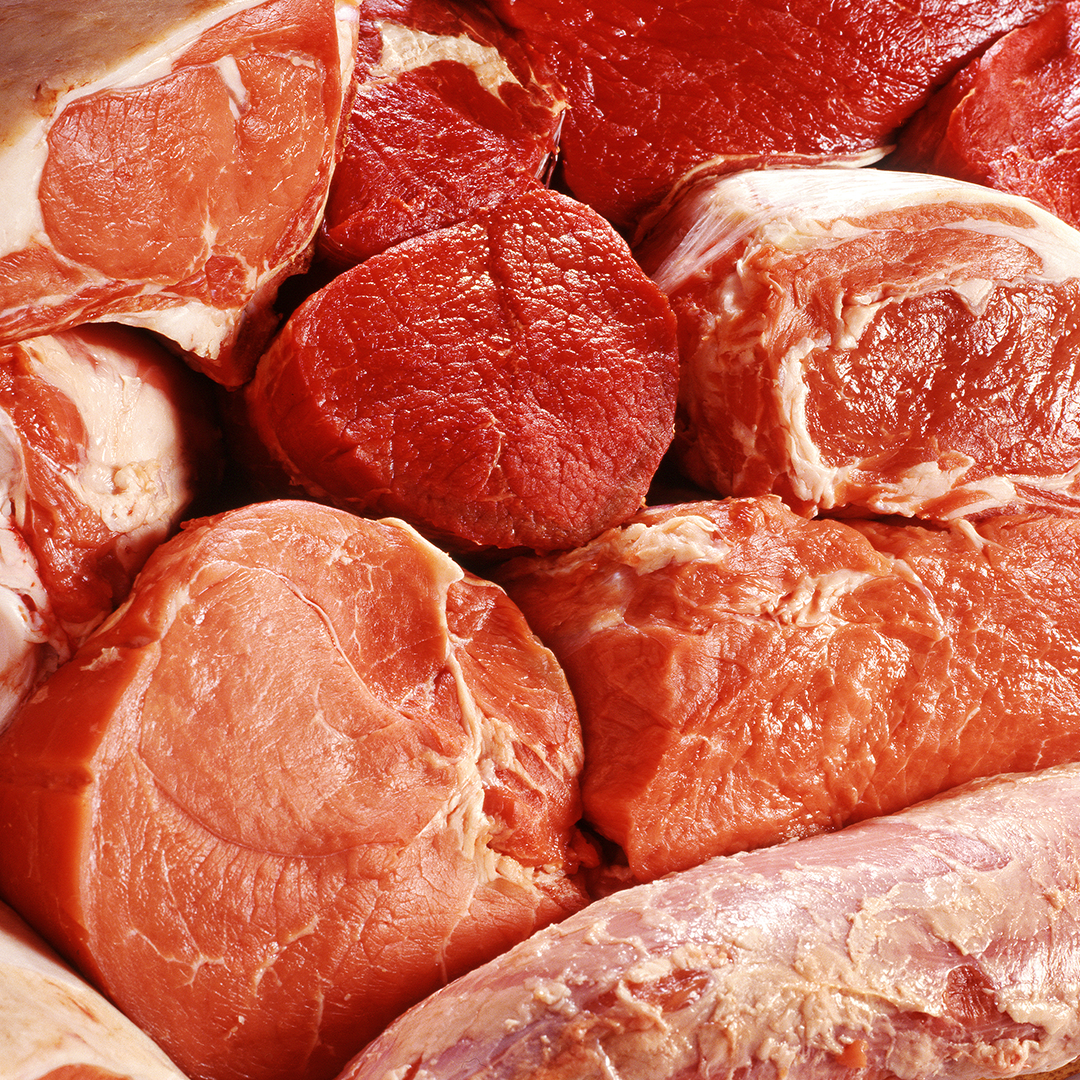
With the ever-evolving trends in food preservation and storage, vacuum sealing has become a popular method among both home cooks and commercial food industries. It offers a plethora of benefits, from extending the shelf life of food to maintaining its nutritional value and taste. In this article, we delve into the world of vacuum sealing, and particularly focus on its advantages when used for meat processing. What is Vacuum Sealing? Vacuum sealing, often referred to as vacuum packaging, is a method of packaging that removes air from the package before sealing it. This method not only minimizes the oxygen levels in the packaging but also restricts the growth of bacteria or fungi, thereby extending the shelf life of the products. This method is widely used for various products, including meat, fish, vegetables, and even non-food items. The Science Behind Vacuum Sealing The process of vacuum sealing revolves around the principle of reducing the amount of oxygen inside a package. Oxygen, a key element in the air we breathe, is also a primary cause of food spoilage. When food is exposed to oxygen, it accelerates the growth of bacteria, mold, and yeast, leading to food degradation and spoilage. By removing oxygen from the packaging, vacuum sealing significantly slows down these processes, thereby preserving the freshness, flavor, and nutritional value of the food. Vacuum Sealing and Meat Processing When it comes to meat processing, vacuum sealing offers numerous advantages. It not only extends the shelf life of meat products but also preserves their flavor, texture, and nutritional value. Whether it's poultry, beef, pork, or fish, vacuum sealing ensures that the meat retains its quality and freshness, even when stored for an extended period. Long-term Preservation of Meat One of the significant advantages of vacuum sealing meat is the extended shelf life it provides. Meat products, whether it's raw or cooked, are highly perishable. However, vacuum sealing can dramatically increase the shelf life of meat. When properly vacuum sealed and stored in a refrigerator or freezer, meat can last up to 2-3 weeks in the fridge and up to 12 months in the freezer, significantly longer than when stored in traditional plastic bags or containers. Prevention of Freezer Burn Another notable benefit of vacuum sealing meat is the prevention of freezer burn. Freezer burn occurs when the surface of frozen food dehydrates and oxidizes, leading to discoloration and a change in flavor and texture. By creating an airtight barrier around the meat, vacuum sealing prevents exposure to air, thus significantly reducing the risk of freezer burn. Retention of Flavor and Nutrients Vacuum sealing also helps in preserving the flavor and nutrients of meat. When meat is exposed to air, it can lead to oxidation, which can alter the flavor and nutritional value of the meat. However, by removing air from the packaging, vacuum sealing ensures that the meat retains its natural flavor and nutrients, offering a fresh-from-the-butcher taste even after weeks of storage. Marinating Made Easy Vacuum sealing can also be a game-changer for marinating meat. The vacuum sealing process opens up the pores of the meat, allowing the marinade to penetrate deeply and quickly. This means you can achieve a rich, flavorful marinated meat in a fraction of the usual time. Vacuum Sealing Machines There is a wide range of vacuum sealing machines available in the market, suitable for both home use and commercial purposes. For home cooks and small-scale meat processors, a basic countertop vacuum sealer would suffice. These machines are compact, easy-to-use, and relatively affordable. For commercial meat processors, especially those dealing with large volumes of meat, industrial-grade vacuum sealing machines would be a better choice. These machines, such as the Henkelman vacuum sealers, are designed to handle heavy-duty vacuum sealing tasks with ease and efficiency. Henkelman Vacuum Sealers Among the various brands of vacuum sealers available in the market, Henkelman stands out for its advanced technology, reliability, and performance. Henkelman offers a wide range of vacuum sealers, from countertop models to large, floor-standing machines. Their vacuum sealers come with features such as stainless steel construction, easy-to-clean design, fast vacuum speed, and digital controls. Some models even offer optional features like gas-flushing, which allows for the injection of an inert gas like nitrogen into the packaging before sealing. This adds an extra layer of protection for the meat, further enhancing its shelf life. Is Vacuum Sealing Worth the Investment? Given the many advantages of vacuum sealing, one might wonder if it's worth the initial investment. The answer largely depends on your meat consumption and storage habits. If you frequently buy meat in bulk, or if you hunt or fish and need to store large quantities of meat, a vacuum sealer can be a worthwhile investment. While the initial cost of a vacuum sealer and the ongoing expense for vacuum bags might seem high, the savings from reduced food waste and extended shelf life can quickly offset these costs. Not to mention the enhanced taste and quality of vacuum-sealed meat, which can elevate your meals to a whole new level. The Future of Meat Processing With the continuous advancements in food technology, vacuum sealing is likely to play an increasingly significant role in meat processing. As consumers become more aware of the importance of food quality and safety, vacuum sealing offers a reliable and efficient solution for preserving meat without the need for artificial preservatives or additives. In conclusion, vacuum sealing is a valuable tool in meat processing. It not only enhances the shelf life and quality of meat but also offers convenience and cost savings. So whether you're a home cook looking to improve the freshness of your meat or a commercial meat processor aiming to boost productivity and profitability, vacuum sealing is definitely worth considering.

The foodservice industry is constantly evolving, with new trends and changes reshaping the way food is prepared, served, and delivered. As we approach 2024, several key trends are expected to redefine the foodservice landscape. In this article, we delve into these trends, laying out what to anticipate in the foodservice industry. 1. The Rise of the Foodservice Industry The foodservice industry has been growing at an impressive rate. The market is poised to grow by USD 985.78 billion during 2020-2024, progressing at a CAGR of almost 5%. Market fragmentation is predicted to accelerate during this period, with major market participants including Performance Food Group Co., Restaurant Brands International Inc., Sodexo Group, Starbucks Corp., and YUM! Brands Inc. The foodservice market is segmented into several categories, such as the foodservice system (conventional, centralized, ready-prepared, assembly-serve), sector (commercial, non-commercial), and geographic segmentation(APAC, Europe, MEA, North America, South America). The demand for mobile foodservice is also expected to offer immense growth opportunities. 2. The Increasing Importance of Delivery Another trend that'ss significantly impacting the foodservice industry is the growing importance of delivery. The global food delivery market is becoming an increasingly larger part of the restaurant sector. Searches for food deliver have surged by 4,400% over the last decade, indicating the growing popularity of this service. The collective revenue of food delivery companies stood at $151.5 billion by the end of 2021, and it's expected to grow to $174.3 billion by the end of 2023. Online food delivery service users rose from 1.17 billion in 2019 to 1.43 billion in 2020, and this figure is predicted to jump to 1.6 billion in 2021. 3. Emergence of Ghost Kitchens The advent of ghost kitchens is another development driving growth in the foodservice market. These are cooking facilities set up solely for preparing food for delivery orders. There's no dine-in or customer-facing experience, and many ghost kitchens contract with multiple restaurants at a time. As online ordering becomes more common, ghost kitchens are becoming increasingly important. By 2020, there were an estimated 1,500 ghost kitchens in the U.S. 4. Growth of the Plant-Based Food Trend Plant-based food continues to be among the key food trends in 2024. This trend is fueled by growing climate and environmental consciousness, especially among the younger generation. The rejection of mass meat production, which many no longer consider ethically acceptable, also strengthens this trend. 5. Impact of Cutting-edge Technology The foodservice industry is also being revolutionized by cutting-edge technology. Precision fermentation, a technique that makes cheese with the help of yeast, offers great potential for more sustainable food production. Additionally, the production of cultured meat or cultured fish, meat and fish products cultivated from animal muscle and fat cells, is another exciting development. 6. Rise of Female Connoisseurs The foodservice industry is also seeing a transformation with an increasing number of women making their mark. Not only are they more prevalent in top restaurants, they are also dominating the food blogging scene, founding innovative food start-ups, and making a name for themselves as bartenders and winemakers. 7. Emergence of Regenerative Food Another rapidly growing trend is regenerative food, which promotes biodiversity and aims to minimize the impact of agriculture on climate change. This trend is now competing with the organic industry. 8. Increasing Focus on Reducing Food Waste One trend that has been around for a while but is gaining renewed focus is the reduction of food waste. In Germany alone, more than a third of the food produced is still thrown away. Nowadays, start-ups, supermarkets, and restaurants are increasingly developing sustainable concepts for recycling food. 9. Labor Challenges in the Foodservice Industry The foodservice industry also faces labor challenges, with labor costs typically making up the largest proportion of restaurant operation costs. Many businesses are hoping to cut costs by automating some tasks. The global food automation market is predicted to grow at an annual rate of 9.5% over the next five years. In conclusion, the foodservice industry is set for significant changes, driven by trends such as the rise of delivery services, the emergence of ghost kitchens, the growth of plant-based food, and the impact of cutting-edge technology. These trends, along with an increased focus on reducing food waste and the challenges of labor in the industry, will shape the future of the foodservice industry in 2024.


